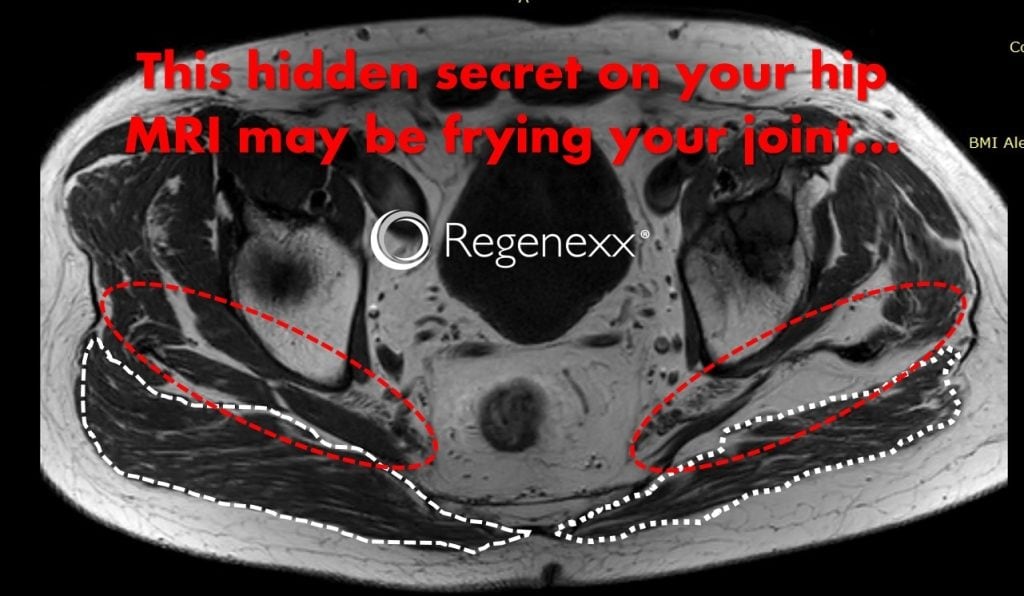What’s Hiding on Your Hip Arthritis MRI?

Is there a secret hiding in your hip arthritis MRI that you should know about but your doctor likely missed? I’ve observed for years that many patients with hip arthritis have problems in their low back nerves and many don’t know about it because all they feel is pain in their hip. There’s also a finding on their MRI that seals the diagnosis, but most radiologists and orthopedic surgeons miss this important telltale sign.
To understand this hidden finding, you first have to understand how nerves and muscles work. Nerves carry pain signals and when they’re pinched or irritated, they can make a distant place hurt so badly that you would be 100% convinced that the part is broken, when in fact it’s fine. So for example, pinching a nerve in your back may or may not be felt there, instead it’s more likely to be felt in the part of the body that the nerve controls. In addition, healthy nerves are essential for healthy muscles. So for example, if the nerve isn’t doing well the muscle dies off or atrophies. A great example is someone after a spinal cord injury whose limbs atrophy because the muscle dies. Some of that is obviously disuse, but some of it is lack of nutrition that the nerve supplies. The MRI above from a hip arthritis patient seen this week has a hidden finding in the dashed lines that’s dramatically different on the right and left. Can you tell just by comparing the muscles in the dashed lines (white vs. white and red vs. red)?
Let’s look more closely at the image. In the red dashed line on the left of the image, you can see dark muscle. In the red dashed circle on the right there’s a lot more white fat than dark muscle. Now compare the white dashed lines on the right versus the left. The butt muscle on the left is much larger than the right. How did all of this happen? Like many hip arthritis patients, this man has a pinched nerve in his back (which does hurt from time to time) that has atrophied his butt and hip girdle muscles on the right side of the image. This has added to the wear and tear on the hip, as these muscles are critical for protecting the joint. When they get smaller and weaker, they can no longer protect that hip and allow the joint too much motion in all the wrong directions. Despite a radiologist and an orthopedic surgeon reading this hip arthritis MRI, nobody noticed this hidden finding that allows us to realize that treating his back will be as important as treating his hip arthritis!
The upshot? MRIs can sometimes tell us a lot, but you have to be very observant and take the time needed to see everything. Our modern managed care insurance reimbursement system means that many radiologists only spend from 30 seconds to 1 minute reading MRI films. Regrettably, at that speed, despite the expertise of the reader, stuff gets missed. In this case, and maybe in your case, the fact that nerve issues in the spine have been frying this guy’s hip joint for many years!

If you have questions or comments about this blog post, please email us at [email protected]
NOTE: This blog post provides general information to help the reader better understand regenerative medicine, musculoskeletal health, and related subjects. All content provided in this blog, website, or any linked materials, including text, graphics, images, patient profiles, outcomes, and information, are not intended and should not be considered or used as a substitute for medical advice, diagnosis, or treatment. Please always consult with a professional and certified healthcare provider to discuss if a treatment is right for you.
